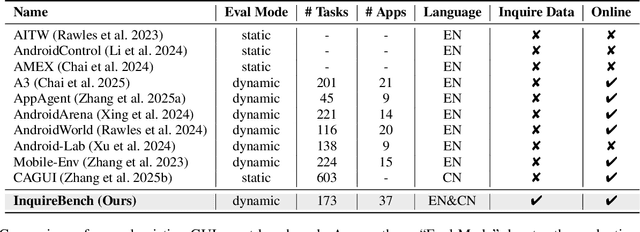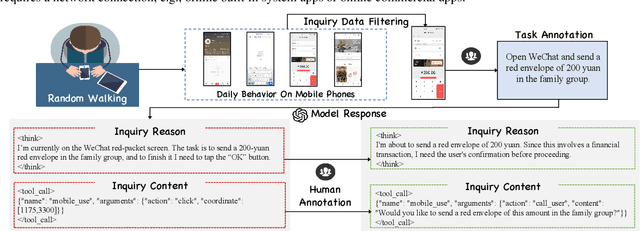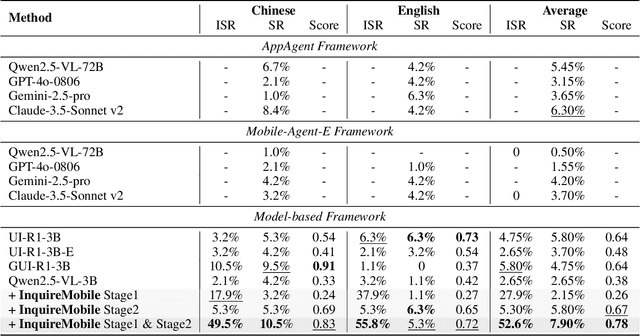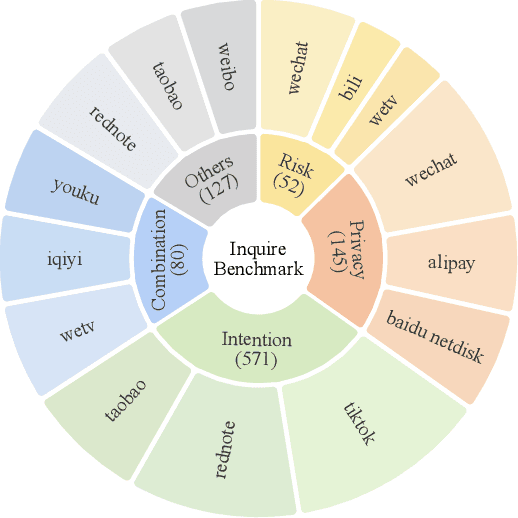Wei Jiang
Department of Control Science and Engineering, Zhejiang University, China
Achieving Optimal Performance-Cost Trade-Off in Hierarchical Cell-Free Massive MIMO
Aug 28, 2025Abstract:Cell-free (CF) massive MIMO offers uniform service via distributed access points (APs), which impose high deployment costs. A novel design called hierarchical cell-free (HCF) addresses this problem by replacing some APs with a central base station, thereby lowering the costs of fronthaul network (wireless sites and fiber cables) while preserving performance. To identify the optimal uplink configuration in HCF massive MIMO, this paper provides the first comprehensive analysis, benchmarking it against cellular and CF systems. We develop a unified analytical framework for spectral efficiency that supports arbitrary combining schemes and introduce a novel hierarchical combining approach tailored to HCF two-tier architecture. Through analysis and evaluation of user fairness, system capacity, fronthaul requirements, and computational complexity, this paper identifies that HCF using centralized zero-forcing combining achieves the optimal balance between performance and cost-efficiency.
What is the Most Efficient Technique for Uplink Cell-Free Massive MIMO?
Aug 28, 2025Abstract:This paper seeks to determine the most efficient uplink technique for cell-free massive MIMO systems. Despite offering great advances, existing works suffer from fragmented methodologies and inconsistent assumptions (e.g., single- vs. multi-antenna access points, ideal vs. spatially correlated channels). To address these limitations, we: (1) establish a unified analytical framework compatible with centralized/distributed processing and diverse combining schemes; (2) develop a universal optimization strategy for max-min power control; and (3) conduct a holistic study among four critical metrics: worst-case user spectral efficiency (fairness), system capacity, fronthaul signaling, and computational complexity. Through analyses and evaluation, this work ultimately identifies the optimal uplink technique for practical cell-free deployments.
InquireMobile: Teaching VLM-based Mobile Agent to Request Human Assistance via Reinforcement Fine-Tuning
Aug 27, 2025



Abstract:Recent advances in Vision-Language Models (VLMs) have enabled mobile agents to perceive and interact with real-world mobile environments based on human instructions. However, the current fully autonomous paradigm poses potential safety risks when model understanding or reasoning capabilities are insufficient. To address this challenge, we first introduce \textbf{InquireBench}, a comprehensive benchmark specifically designed to evaluate mobile agents' capabilities in safe interaction and proactive inquiry with users, encompassing 5 categories and 22 sub-categories, where most existing VLM-based agents demonstrate near-zero performance. In this paper, we aim to develop an interactive system that actively seeks human confirmation at critical decision points. To achieve this, we propose \textbf{InquireMobile}, a novel model inspired by reinforcement learning, featuring a two-stage training strategy and an interactive pre-action reasoning mechanism. Finally, our model achieves an 46.8% improvement in inquiry success rate and the best overall success rate among existing baselines on InquireBench. We will open-source all datasets, models, and evaluation codes to facilitate development in both academia and industry.
Convergence Analysis of the Lion Optimizer in Centralized and Distributed Settings
Aug 17, 2025Abstract:In this paper, we analyze the convergence properties of the Lion optimizer. First, we establish that the Lion optimizer attains a convergence rate of $\mathcal{O}(d^{1/2}T^{-1/4})$ under standard assumptions, where $d$ denotes the problem dimension and $T$ is the iteration number. To further improve this rate, we introduce the Lion optimizer with variance reduction, resulting in an enhanced convergence rate of $\mathcal{O}(d^{1/2}T^{-1/3})$. We then analyze in distributed settings, where the standard and variance reduced version of the distributed Lion can obtain the convergence rates of $\mathcal{O}(d^{1/2}(nT)^{-1/4})$ and $\mathcal{O}(d^{1/2}(nT)^{-1/3})$, with $n$ denoting the number of nodes. Furthermore, we investigate a communication-efficient variant of the distributed Lion that ensures sign compression in both communication directions. By employing the unbiased sign operations, the proposed Lion variant and its variance reduction counterpart, achieve convergence rates of $\mathcal{O}\left( \max \left\{\frac{d^{1/4}}{T^{1/4}}, \frac{d^{1/10}}{n^{1/5}T^{1/5}} \right\} \right)$ and $\mathcal{O}\left( \frac{d^{1/4}}{T^{1/4}} \right)$, respectively.
ASM-UNet: Adaptive Scan Mamba Integrating Group Commonalities and Individual Variations for Fine-Grained Segmentation
Aug 10, 2025Abstract:Precise lesion resection depends on accurately identifying fine-grained anatomical structures. While many coarse-grained segmentation (CGS) methods have been successful in large-scale segmentation (e.g., organs), they fall short in clinical scenarios requiring fine-grained segmentation (FGS), which remains challenging due to frequent individual variations in small-scale anatomical structures. Although recent Mamba-based models have advanced medical image segmentation, they often rely on fixed manually-defined scanning orders, which limit their adaptability to individual variations in FGS. To address this, we propose ASM-UNet, a novel Mamba-based architecture for FGS. It introduces adaptive scan scores to dynamically guide the scanning order, generated by combining group-level commonalities and individual-level variations. Experiments on two public datasets (ACDC and Synapse) and a newly proposed challenging biliary tract FGS dataset, namely BTMS, demonstrate that ASM-UNet achieves superior performance in both CGS and FGS tasks. Our code and dataset are available at https://github.com/YqunYang/ASM-UNet.
Improved Analysis for Sign-based Methods with Momentum Updates
Jul 16, 2025



Abstract:In this paper, we present enhanced analysis for sign-based optimization algorithms with momentum updates. Traditional sign-based methods, under the separable smoothness assumption, guarantee a convergence rate of $\mathcal{O}(T^{-1/4})$, but they either require large batch sizes or assume unimodal symmetric stochastic noise. To address these limitations, we demonstrate that signSGD with momentum can achieve the same convergence rate using constant batch sizes without additional assumptions. Our analysis, under the standard $l_2$-smoothness condition, improves upon the result of the prior momentum-based signSGD method by a factor of $\mathcal{O}(d^{1/2})$, where $d$ is the problem dimension. Furthermore, we explore sign-based methods with majority vote in distributed settings and show that the proposed momentum-based method yields convergence rates of $\mathcal{O}\left( d^{1/2}T^{-1/2} + dn^{-1/2} \right)$ and $\mathcal{O}\left( \max \{ d^{1/4}T^{-1/4}, d^{1/10}T^{-1/5} \} \right)$, which outperform the previous results of $\mathcal{O}\left( dT^{-1/4} + dn^{-1/2} \right)$ and $\mathcal{O}\left( d^{3/8}T^{-1/8} \right)$, respectively. Numerical experiments further validate the effectiveness of the proposed methods.
Aggregated Structural Representation with Large Language Models for Human-Centric Layout Generation
May 26, 2025Abstract:Time consumption and the complexity of manual layout design make automated layout generation a critical task, especially for multiple applications across different mobile devices. Existing graph-based layout generation approaches suffer from limited generative capability, often resulting in unreasonable and incompatible outputs. Meanwhile, vision based generative models tend to overlook the original structural information, leading to component intersections and overlaps. To address these challenges, we propose an Aggregation Structural Representation (ASR) module that integrates graph networks with large language models (LLMs) to preserve structural information while enhancing generative capability. This novel pipeline utilizes graph features as hierarchical prior knowledge, replacing the traditional Vision Transformer (ViT) module in multimodal large language models (MLLM) to predict full layout information for the first time. Moreover, the intermediate graph matrix used as input for the LLM is human editable, enabling progressive, human centric design generation. A comprehensive evaluation on the RICO dataset demonstrates the strong performance of ASR, both quantitatively using mean Intersection over Union (mIoU), and qualitatively through a crowdsourced user study. Additionally, sampling on relational features ensures diverse layout generation, further enhancing the adaptability and creativity of the proposed approach.
CONCORD: Concept-Informed Diffusion for Dataset Distillation
May 23, 2025Abstract:Dataset distillation (DD) has witnessed significant progress in creating small datasets that encapsulate rich information from large original ones. Particularly, methods based on generative priors show promising performance, while maintaining computational efficiency and cross-architecture generalization. However, the generation process lacks explicit controllability for each sample. Previous distillation methods primarily match the real distribution from the perspective of the entire dataset, whereas overlooking concept completeness at the instance level. The missing or incorrectly represented object details cannot be efficiently compensated due to the constrained sample amount typical in DD settings. To this end, we propose incorporating the concept understanding of large language models (LLMs) to perform Concept-Informed Diffusion (CONCORD) for dataset distillation. Specifically, distinguishable and fine-grained concepts are retrieved based on category labels to inform the denoising process and refine essential object details. By integrating these concepts, the proposed method significantly enhances both the controllability and interpretability of the distilled image generation, without relying on pre-trained classifiers. We demonstrate the efficacy of CONCORD by achieving state-of-the-art performance on ImageNet-1K and its subsets. The code implementation is released in https://github.com/vimar-gu/CONCORD.
Improved Methods for Model Pruning and Knowledge Distillation
May 20, 2025Abstract:Model pruning is a performance optimization technique for large language models like R1 or o3-mini. However, existing pruning methods often lead to significant performance degradation or require extensive retraining and fine-tuning. This technique aims to identify and remove neurons, connections unlikely leading to the contribution during the human-computer interaction phase. Our goal is to obtain a much smaller and faster knowledge distilled model that can quickly generate content almost as good as those of the unpruned ones. We propose MAMA Pruning, short for Movement and Magnitude Analysis, an improved pruning method that effectively reduces model size and computational complexity while maintaining performance comparable to the original unpruned model even at extreme pruned levels. The improved method is based on weights, bias fixed in the pre-training phase and GRPO rewards verified during the post-training phase as our novel pruning indicators. Preliminary experimental results show that our method outperforms and be comparable to state-of-the-art methods across various pruning levels and different downstream computational linguistics tasks.
BiECVC: Gated Diversification of Bidirectional Contexts for Learned Video Compression
May 15, 2025Abstract:Recent forward prediction-based learned video compression (LVC) methods have achieved impressive results, even surpassing VVC reference software VTM under the Low Delay B (LDB) configuration. In contrast, learned bidirectional video compression (BVC) remains underexplored and still lags behind its forward-only counterparts. This performance gap is mainly due to the limited ability to extract diverse and accurate contexts: most existing BVCs primarily exploit temporal motion while neglecting non-local correlations across frames. Moreover, they lack the adaptability to dynamically suppress harmful contexts arising from fast motion or occlusion. To tackle these challenges, we propose BiECVC, a BVC framework that incorporates diversified local and non-local context modeling along with adaptive context gating. For local context enhancement, BiECVC reuses high-quality features from lower layers and aligns them using decoded motion vectors without introducing extra motion overhead. To model non-local dependencies efficiently, we adopt a linear attention mechanism that balances performance and complexity. To further mitigate the impact of inaccurate context prediction, we introduce Bidirectional Context Gating, inspired by data-dependent decay in recent autoregressive language models, to dynamically filter contextual information based on conditional coding results. Extensive experiments demonstrate that BiECVC achieves state-of-the-art performance, reducing the bit-rate by 13.4% and 15.7% compared to VTM 13.2 under the Random Access (RA) configuration with intra periods of 32 and 64, respectively. To our knowledge, BiECVC is the first learned video codec to surpass VTM 13.2 RA across all standard test datasets. Code will be available at https://github.com/JiangWeibeta/ECVC.
 Add to Chrome
Add to Chrome Add to Firefox
Add to Firefox Add to Edge
Add to Edge